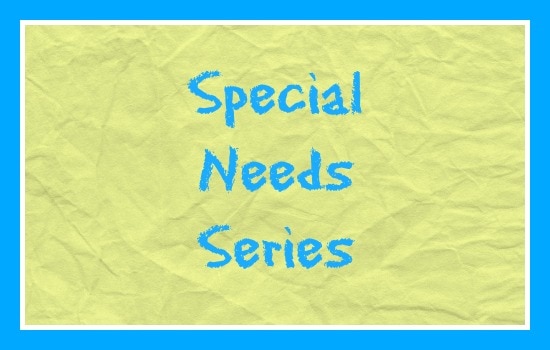By Kristen Bagwell
When I was in 4th grade, a child in our class was classified ADD/ADHD. It was a relatively new diagnosis at the time, and seemed to be a very negative thing. “He needs drugs to keep him calm,” said a classmate, which didn’t make this poor child any new friends. However, the class learned to accept his behavior rather than ostracize him for it, despite the fact that there were some subtle differences in his behavior.
We’ve come a long way since then. The American Psychiatric Society has recognized ADHD as a medical disorder in its Diagnostic and Statistical Manual of Mental Disorders (the official mental health “bible” used by psychologists and psychiatrists. ) Some facts: an estimated 6% of the adult population has ADHD. Girls are just as likely to be affected as boys. More than 70% of people who are diagnosed with ADHD as a child will continue to struggle with it as an adolescent, and nearly 50% will continue to face challenges into adulthood. And while diagnosis is key, only one in 4 affected adults seeks treatment, leading to increased risk of depression and social anxiety disorders in those left untreated.
Parents may struggle with ADHD, thinking that their child is just poorly behaved, or that it’s all in their own heads. Actually, it’s all in the child’s head – ADHD has been found to be a biological disorder, not a psychiatric one. (There are psychiatric concerns that may need to be addressed with this diagnosis, so don’t rule those out – just realize that this disorder has a basis in your child’s brain.) Through years of research, scientists have found that deficiencies in specific neurotransmitters underlie many common disorders, including anxiety, depression, anger-control problems, and obsessive-compulsive disorder.
ADHD was the first disorder found to be the result of a deficiency of a specific neurotransmitter — in this case, norepinephrine — and the first disorder found to respond to medications to correct this underlying deficiency. Like all neurotransmitters, norepinephrine is synthesized within the brain. The basic building block of each norepinephrine molecule is dopa; this tiny molecule is converted into dopamine, which, in turn, is converted into norepinephrine. (excerpt from “What Is ADHD? Attention Deficit Diagnosis and Treatment Information” by Dr. Larry Silver, ADDitude magazine.)
In plain English? Children who suffer from ADHD actually have irregular brain function. The brain instructs parts of the body to do things based on thousands of signals that are picked up by the appropriate receiver to cause action. For example, the eye needs to blink so it does not dry out. Neurotransmitter sends signal to “blink” receiver, signal is received, eye blinks. Easy, right? However, a child with ADHD has an imbalance of these chemical messengers (neurotransmitters) within the brain, causing different results.
What does ADHD look like in a child? Sometimes it’s hard to tell, so a professional diagnosis is always recommended. “If a child is having problems in school, he may have attention deficit disorder (ADD ADHD), but it’s also possible that he has a learning disability. Or depression. Or anxiety. Sometimes what looks like ADHD is the result of family tensions,” says Larry Silver, MD. The primary symptoms of ADHD are inattention, impulsiveness, and occasionally, hyperactivity. Those symptoms are easy to attribute to a child’s age or temperament, but listen to your gut – if you’re worried, see a specialist.
It is important to remember that kids with ADHD are not “bad,” and the disorder has nothing to do with parenting or the environment in which the child is being raised. ADHD is a neurological disorder that can be helped with behavioral counseling, parent and patient education, and medication if necessary.
Incidentally, recent studies have shown that many people affected by ADHD are of above-average intelligence. Some examples? Paul Orfalea, the founder of Kinko’s, has ADHD. Michael Laskoff is the CEO of AbilTo, which uses a unique approach to create a better alternative for millions of people seeking to overcome commonplace behavioral disorders and life transitions. (Check out his blog here.) Many high achievers from the past are thought to have had ADHD as well: Abraham Lincoln, Mozart, and Benjamin Franklin, to name a few.
If you feel that your child may have ADHD, speak to your health care provider, and bring a list of symptoms/situations to that meeting. There are many local resources available, and much support to be found in the ADHD parenting community. As for online resources, there are tons. About.com is a popular choice, and has a large section devoted to ADHD within its Special Needs website. Here are a few good links:
– Common ADHD Symptoms in Children
– Parenting ADHD Children with Learning Disabilities
– Advocate for your Child: Getting ADHD Accommodations
– Alternative treatment options for children with ADHD
– The Feingold Diet is thought to help address ADHD and other disorders in sensitive children.
Does your child have ADHD? What tips or advice would you give other parents? What local resources do you recommend?
A big thank you to my “sources,” and to About.com and ADDitude magazine for providing such helpful information!
Leave a comment on any blog post this month for your chance to win a $25 gift card to Biscuitville! We are running this contest through the end of October, and then we’ll pick one random commenter as the winner! The more you comment on posts this month, the greater your chance of winning. Be sure to include your email address in the email address box when commenting so we have a way to reach you if you are the winner. Good luck and leave your comments below!
















